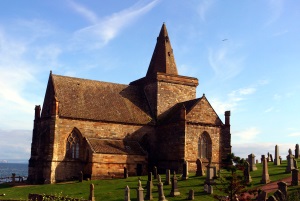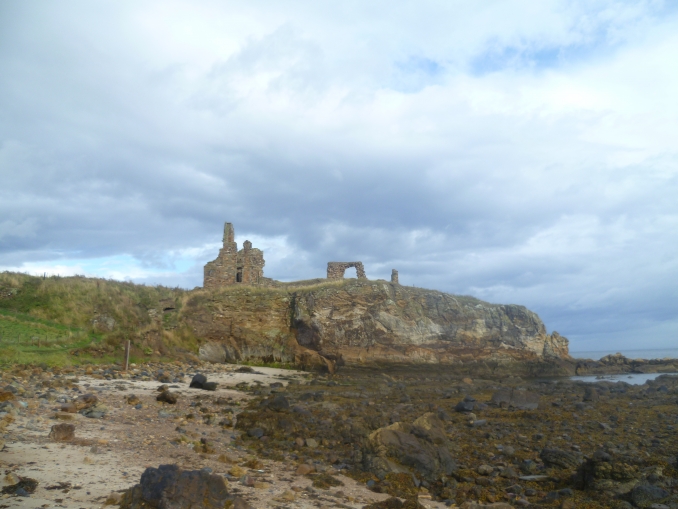Magic moments on the East Neuk of Fife

On the East Neuk of Fife (Neuk is the Scots word for corner or nook) is the attractive village of St Monans, sometimes spelt as St Monance. It's name is taken from Saint Monan, also referred to in Ireland as Saint Moenenn. Little is known of this 6th - 7th century Saint, although a history of his life is recorded in the Aberdeen Breviary, which gives short accounts of various Scottish saints and was printed in Edinburgh in 1507. The feast day of St Monan is on March 1st. The Aberdeen Breviary is mostly the work of William Elphinstone (1431 - 25 October 1514). He was Bishop of Aberdeen from 1483 until his death in 1514. He was also the founder of the University of Aberdeen.

St Monans village with it's beautiful buildings gathered around a small harbour area was once home to a thriving fishing industry and a centre for salt production. The village is located on the Fife Coastal Path and looks southwards across the Firth of Forth towards North Berwick and the Scottish Natural Heritage run nature reserve Isle of May (Scottish Gaelic: Eilean Mhàigh). To the west of the village stands the Old Kirk of St Monans that originally dates from the thirteenth century. A beautiful building standing within it's kirkyard and overlooking the sea. King David II (Scottish Gaelic: Dàibhidh Bruis) of Scotland, who reigned from 7th June 1329 - 22 February 1371, had the church enlarged after his life was saved during a violent storm after he had offered prayers up to St Monan.
As I walked from the church west along the Fife Coastal Path the skyline could not have been more dramatic. It was early evening in August. I had earlier left the hustle and bustle of Edinburgh where the Festival was in full swing. Excited crowds thronged the Royal Mile and Princes Street. Now here I was having travelled north from the City and walking along the coast with no-one else in sight. The dark clouds had begun to gather threatening heavy showers. Then walking west from the church I saw in the distance the incredible site of the ruins of Newark Castle which is sometimes referred to as the Castle of St Monans.

On this dark brooding day it was framed by storm clouds of various shades of grey. At one point the clouds parted and cast a shaft of veiled sunlight over the castle. Quite breathtaking. As I walked to the site I first reached the circular beehive dovecot to the east and then on to the castle itself. It is clear that great care needs to be taken when visiting this site as the buildings are crumbling due to age and coastal erosion. However, the location is magnificent and it has a very special atmosphere. People often use the word magical to describe impressive ruins such as this. But this is an apt description of this castle. You can sense and feel it. If walls could talk then this place has stories to tell and secrets to whisper and share.

There were several periods of building that took place since the first castle stood on the site in the thirteenth century. It is said to be the place were King Alexander III of Scotland (1241-1286) spent part of his childhood. He was the last King of the House of Dunkeld (Scottish Gaelic: Dùn Chailleann), although succeeded by his granddaughter, Norwegian Princess Margaret, Queen of Scots. However, her status as Queen is disputed as she was not crowned. She drowned near the Orkney Islands in 1290 when travelling to Scotland from Bergen and her death left no clear heir to the Scottish throne.
The remains that stand today mostly date to the 15th century. There are the ruins of the main block, vaults and defensive walls. A walk down to the beach beside the castle gives yet another wonderful perspective of this once great building standing proudly in defiance and guarding this section of coastline. As I started to make my way from the castle returning in the direction of the Old Kirk, on cue, black clouds rolled in over the Firth of Forth. The wind picked up signalling another heavy shower on the way. In the wind I could imagine the voice of the castle - "leaving so soon? But we have so many stories to tell. Come back and we'll let you know our secrets". I looked back and thought yes I will come back. This wonderful castle had cast its magic spell.

Photos of Newark Castle taken by the author
- Scottish
- English
- Log in to post comments






